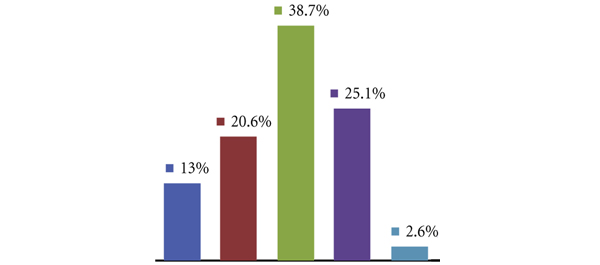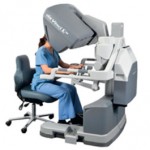Article of the week: The survey says: surgeon preferences during robot-assisted radical prostatectomy
Every week the Editor-in-Chief selects the Article of the Week from the current issue of BJUI. The abstract is reproduced below and you can click on the button to read the full article, which is freely available to all readers for at least 30 days from the time of this post.
In addition to the article itself, there is an accompanying editorial written by a prominent member of the urological community. This blog is intended to provoke comment and discussion and we invite you to use the comment tools at the bottom of each post to join the conversation.
If you only have time to read one article this week, it should be this one.
The European Association of Urology Robotic Urology Section (ERUS) survey of robot-assisted radical prostatectomy (RARP)
Vincenzo Ficarra1, Peter N. Wiklund2, Charles Henry Rochat3, Prokar Dasgupta4, Benjamin J. Challacombe4, Prasanna Sooriakumaran5, Stefan Siemer6, Nazareno Suardi7, Giacomo Novara1 and Alexandre Mottrie8
1Oncological and Surgical Sciences, Urology Clinic, University of Padua, Padua, Italy; 2Urology Laboratory, Department of Molecular Medicine and Surgery, Karolinska Institutet, Stockholm, Sweden; 3Multidisciplinary Centre of Robot-Assisted Laparoscopic Surgery, Générale-Beaulieu Clinic, Geneva, Switzerland; 4Department of Urology, Guy’s Hospital, London, UK; 5Department of Urology, Royal Surrey County Hospital, Guildford, UK; 6Department of Urology, Universitätsklinikum des Saarlandes, Homburg/Saar, Germany; 7Department of Urology, Vita-Salute University San Raffaele, Milan, Italy; and 8Department of Urology O.L.V. Clinic Aalst, Aalst, Belgium; EAU Robotic Urologic Section (ERUS) Scientific Working Group
OBJECTIVE
• To evaluate surgeons adherence to current clinical practice, with the available evidence, for robot-assisted radical prostatectomy (RARP) and offer a baseline assessment to measure the impact of the Pasadena recommendations. Recently, the European Association of Urology Robotic Urology Section (ERUS) supported the Pasadena Consensus Conference on best practices in RARP.
SUBJECTS AND METHODS
• This survey was performed in January 2012. A specific questionnaire was sent, by e-mail, to 145 robotic surgeons who were included in the mailing-list of ERUS members and working in different urological institutions.
• Participating surgeons were invited to answer a multiple-choice questionnaire including 24-items evaluating the main RARP surgical steps.
RESULTS
• In all, 116 (79.4%) invited surgeons answered the questionnaire and accepted to participate to the ERUS survey.
• In all, 47 (40.5%) surgeons performed >100 RARPs; 41 (35.3%) between 50 and 100, and 28 (24.1%) <50 yearly.
• The transperitoneal, antegrade technique was the preferred approach.
• Minimising bladder neck dissection and the use of athermal dissection of the neurovascular bundles (NVBs) were also popular.
• There was more heterogeneity in the use of energy for seminal vesicle dissection, the preservation of the tips of the seminal vesicle and the choice between intra- and interfascial planes during the antero-lateral dissection of the NVBs. There was also large variability in the posterior and/or anterior reconstruction steps.
CONCLUSIONS
• The present study is the first international survey evaluating surgeon preferences during RARP.
• Considering that the results were collected before the publication of the Pasadena recommendations, the data might be considered an important baseline evaluation to test the dissemination and effects of the Pasadena recommendations in subsequent years.




It would be very helpful to repeat this survey next year perhaps at ERUS